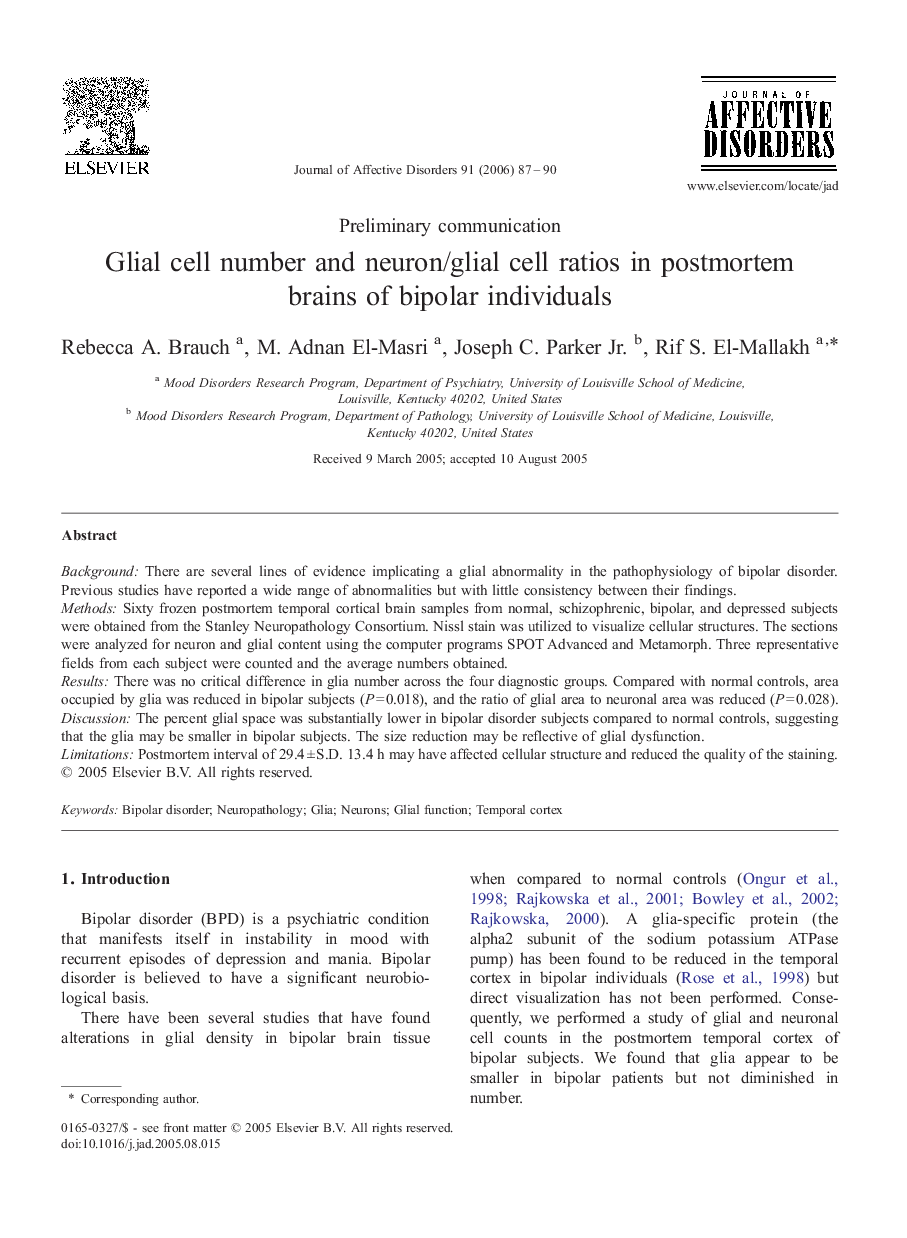| Article ID | Journal | Published Year | Pages | File Type |
|---|---|---|---|---|
| 4188072 | Journal of Affective Disorders | 2006 | 4 Pages |
BackgroundThere are several lines of evidence implicating a glial abnormality in the pathophysiology of bipolar disorder. Previous studies have reported a wide range of abnormalities but with little consistency between their findings.MethodsSixty frozen postmortem temporal cortical brain samples from normal, schizophrenic, bipolar, and depressed subjects were obtained from the Stanley Neuropathology Consortium. Nissl stain was utilized to visualize cellular structures. The sections were analyzed for neuron and glial content using the computer programs SPOT Advanced and Metamorph. Three representative fields from each subject were counted and the average numbers obtained.ResultsThere was no critical difference in glia number across the four diagnostic groups. Compared with normal controls, area occupied by glia was reduced in bipolar subjects (P = 0.018), and the ratio of glial area to neuronal area was reduced (P = 0.028).DiscussionThe percent glial space was substantially lower in bipolar disorder subjects compared to normal controls, suggesting that the glia may be smaller in bipolar subjects. The size reduction may be reflective of glial dysfunction.LimitationsPostmortem interval of 29.4 ± S.D. 13.4 h may have affected cellular structure and reduced the quality of the staining.
